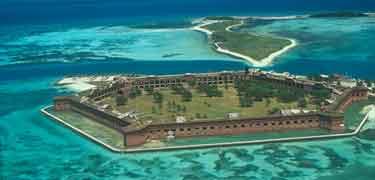There seems to be a looming critical mass that, if reached and nurtured, could bring far-reaching improvements to the National Park System. Of course, key is reaching that critical mass, and it's impossible to say if that will be achieved.
Part of that mass revolves around the Centennial Initiative launched back in August 2006 by the Bush administration. Crafted to apply a thorough coat of polish to the National Park System in time for the Park Service's centennial in 2016, the initiative is moving in the right direction, even if that movement is somewhat jerky.
Last year, for instance, the challenge produced $51.6 million worth of projects (just over half of the initiative's annual goal; see attachment) around the system, ranging from improved power systems to biodiversity inventories and efforts to develop tomorrow's national park stewards,
On Tuesday the second-round of projects was announced, and it paled substantially from the first-round, both in terms of projects -- 110 in 2008 versus just nine this year -- and dollars. While the private-public match generated nearly $52 million for 2008's projects, this year just $27 million was generated. The relatively low total can be attributed, according to Secretary Dirk Kempthorne, to spending limitations surrounding the continuing resolution that Congress passed last fall for budgetary matters.
That said, here's what's being funded this year through the initiative:
* Haleakala National Park, Hawaii
$1.2 million to remove and control invasive species and restore rare and endangered plants. Costs were split 50-50 between the Maui Invasive Species Committee and the Centennial Challenge.
* Independence National Historical Park, Pennsylvania
$18 million to rehabilitate the Ben Franklin Museum at Franklin Court. The Pew Charitable Trusts contributed $12 million, with the Centennial Challenge chipping in $6 million.
* Indiana Dunes National Lakeshore, Indiana
$300,000 for a BioBlitz!, also known as an all-taxa biodiversity inventory. Half of the funds are from the National Geographic Society, half from the Centennial Challenge.
* Jefferson National Expansion Memorial, Missouri
$370,000 to replace the Arch tram operating system. Half of the funds are from the Metro Business Enterprises and half from the Centennial Challenge
* Kenai Fjords National Park, Alaska
$200,000 to improve the Exit Glacier visitor facilities. Half of the funds are from Alaska Geographic, half from the Centennial Challenge
* National Capital Parks – East, Washington, D.C.
$400,000 to expand the “Bridging the Watershed” environmental education program. Half of the funds are from the Alice Ferguson Foundation, half from the Centennial Challenge.
* Santa Monica Mountains National Recreation Area, California
$5.3 million to rehabilitate the Gillette Ranch building as a visitor center. Half of the funds are from the Mountains Recreation and Conservation Authority, half from the Centennial Challenge.
* Wrangell-St. Elias National Park and Preserve, Alaska
$100,000 to add a transportation gateway and exhibits in the Kennecott Mines National Historic Landmark. Half of the funds are from the Stephen and Mary Birch Foundation, Inc., and half are from the Centennial Challenge.
* Yellowstone National Park, Wyoming, Montana, Idaho
$1 million to conduct a molecular all-taxa biodiversity inventory for Yellowstone Lake. Half of the funds are from the Yellowstone Park Foundation, half from the Centennial Challenge.
While there are some strong projects here, (Shouldn't the Jefferson National Expansion Memorial project be part of the Park Service's regular maintenance?) the package would have been far less impressive, at least dollar-wise, if the Pew Charitable Trusts had not stepped forward with $12 million for the Franklin museum.
Getting back to that critical mass thing, on Wednesday there will be more details about the economic stimulus package conservation groups are pushing for the national parks. The proposed projects are fairly impressive -- items such as $1 million to repair the failing sewage system at Cuyahoga Valley National Park, $10 million for repairs at the historic Fort Jefferson at Dry Tortugas National Park, $9 million for repairs to roads and parking lots at Acadia National Park, $21.35 million for the ongoing rehabilitation of the Going-to-the-Sun Road at Glacier National Park.
Park Service Director Mary Bomar says the National Parks Conservation Association worked with her agency in developing the list, which was built from projects on the Park Service's hefty deferred maintenance list.
Of course, what remains to be seen is whether the Obama administration will consider this stimulus worthwhile. In fact, these programs, both the Centennial Initiative and the stimulus proposal, hang on the whims of the incoming administration.
Will Interior secretary nominee Ken Salazar and whoever succeeds Director Bomar support these endeavors? If not, the extra $1 billion the Bush administration agreed to deliver to the Park Service over a decade, as well as the matching program that was seen to generate another $2 billion, will fade away.
And what will become of the Second Century Commission, that special task force assembled by the NPCA to look into the problems of the National Park System and report on them?
How will the Obama administration receive its report?
And then, of course, there is Congress and its visions for the national parks. U.S. Reps. Nick Joe Rahall, D-WVa, and Raul Grijalva, D-AZ, back in 2007 produced their own billion-dollar-plan for the Park Service's centennial. But that was nearly two years ago. Haven't heard much since then.
Perhaps what will pull all these various plans, programs, and proposals together and garner support from the American public, at least temporarily, behind a serious push for the parks is Ken Burns' upcoming documentary on the parks. Due out this fall, this 12-hour series could be just the thing to trigger the critical mass.




Add comment